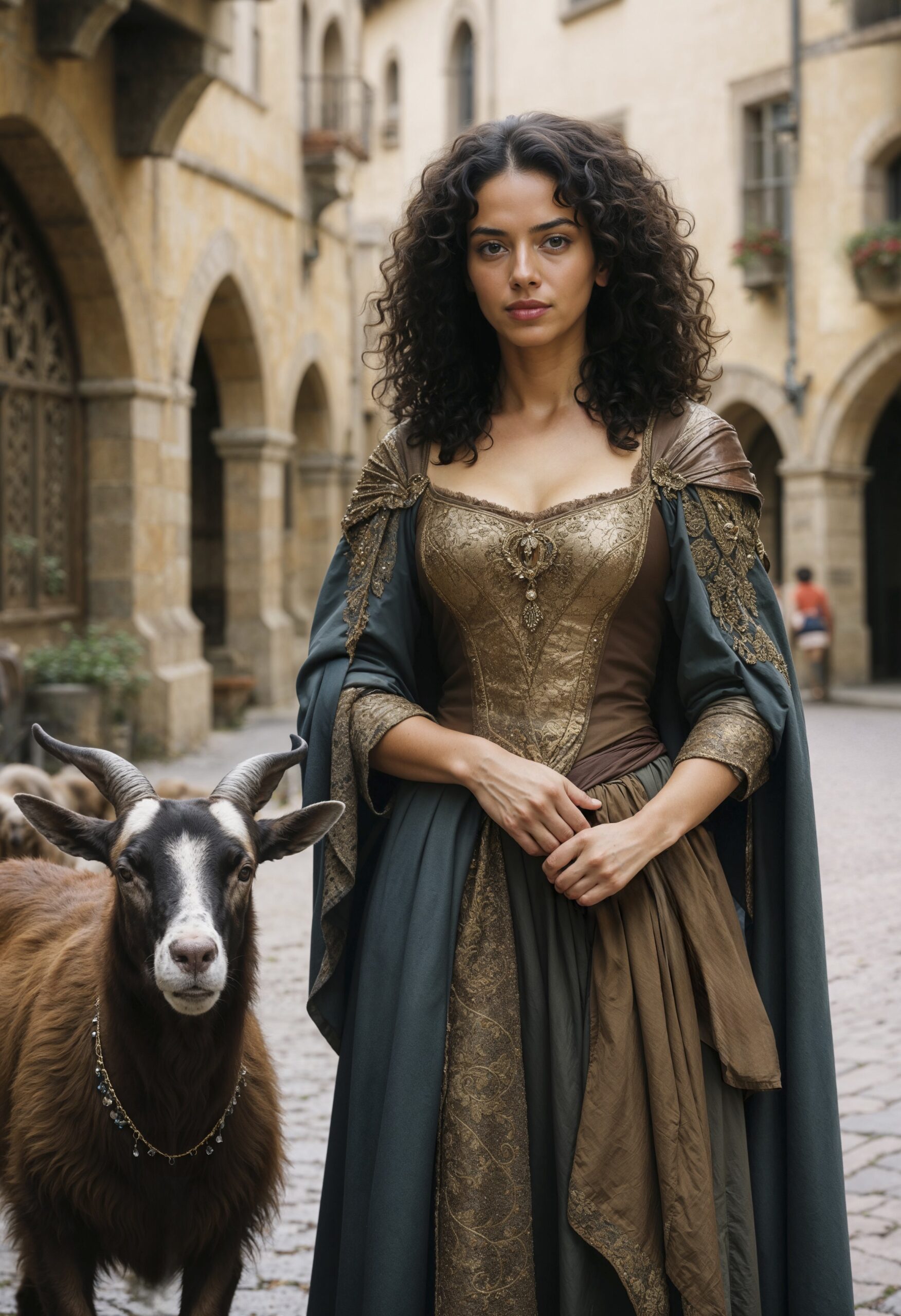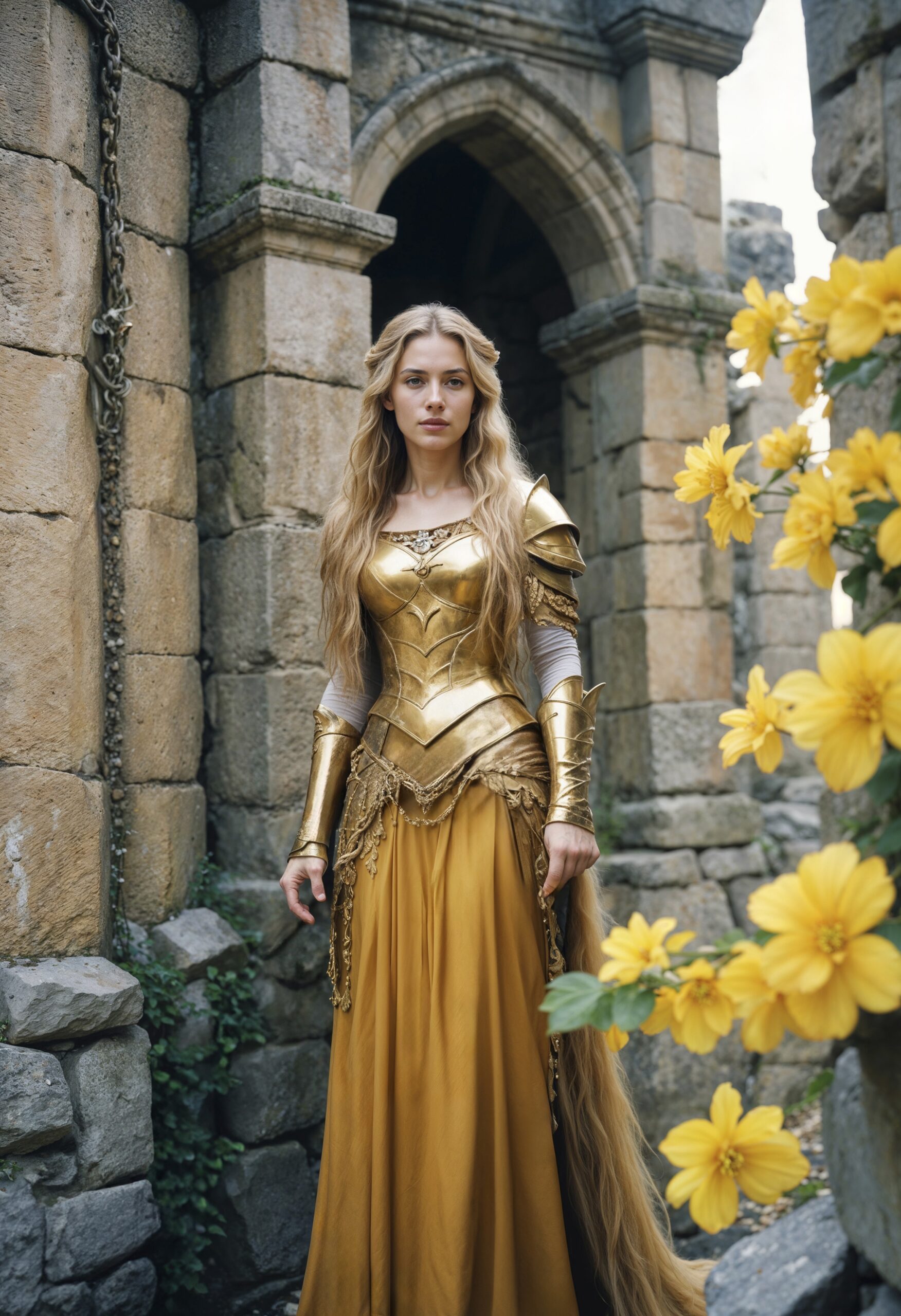“In the shadows between empires, fashion found its soul in the marriage of necessity and beauty.”
— Dinis Guarda

Medieval Metamorphosis — European Evolution (476-1485 CE)
The medieval period witnessed fashion’s transformation from classical drapery to structured garments that would define European dress for centuries. This era established many fundamental tailoring principles and also developed fashion’s role in expressing social hierarchy and religious devotion.
In the centuries following Rome’s fall, European fashion underwent a transformation that established many principles governing Western dress. The medieval period witnessed fashion’s evolution from classical drapery to structured tailoring, developing techniques and aesthetic approaches that remain fundamental to contemporary clothing construction.
Early medieval fashion initially simplified as European society restructured itself following imperial collapse. Yet this apparent regression masked significant innovation as local traditions merged with remnant Roman styles, creating regionally distinctive approaches to dress that celebrated both practical necessity and emerging aesthetic sensibilities. The medieval period witnessed fashion’s transformation from classical drapery to structured garments that would define European dress for centuries. This era established many fundamental tailoring principles and also developed fashion’s role in expressing social hierarchy and religious devotion.

The 12th century marked fashion’s revolutionary turn toward body-conscious construction. The introduction of fitted garments required unprecedented precision in cutting and sewing, establishing tailoring as a sophisticated craft demanding years of apprenticeship to master. This approach fundamentally changed clothing’s relationship to the human form, creating garments that enhanced rather than obscured the body’s natural lines whilst providing practical protection and social communication.
Gothic fashion (1150-1400) achieved extraordinary heights of complexity and symbolic meaning. Garments featured intricate construction techniques, elaborate decorative elements, and the widespread adoption of buttons as both functional and aesthetic features. The period’s characteristic vertical emphasis—seen in pointed shoes, tall headdresses, and elongated silhouettes—reflected Gothic architecture’s aspiration toward heaven, transforming fashion into a form of material spirituality that lifted both body and soul toward divine realms.
Early Medieval Foundations
Following Rome’s fall, European fashion was initially simple but gradually incorporated influences from migrants. Viking, Celtic, and Germanic traditions merged with remnant Roman styles, creating regionally distinct approaches to dress that celebrated both practicality and artistry.

The Rise of Tailoring
The 12th century marked fashion’s revolutionary turn toward fitted garments. The introduction of the surcoat, cotte, and early doublets required precise cutting and sewing, establishing tailoring as a sophisticated craft. This fitted approach fundamentally changed how clothing related to the body.
Gothic Grandeur
The Gothic period (1150-1400) saw fashion reach unprecedented heights of complexity and decoration. Garments featured intricate construction, elaborate headdresses, and the widespread use of buttons as both functional and decorative elements. The houppelande and its variations created silhouettes that emphasised vertical lines and spiritual aspiration.
Key Benchmarks
| Period | Innovation | Significance |
| 800 CE | Fitted tunics | Body-conscious construction |
| 1100 CE | Crusade influences | Eastern textile introduction |
| 1200 CE | Button development | Functional closure |
| 1350 CE | Gothic silhouettes | Vertical fashion emphasis |
— Dinis Guarda with Jasmeen Dugal
Dinis Guarda is an author, academic, influencer, serial entrepreneur, and leader in 4IR, AI, Fintech, digital transformation, and Blockchain. Dinis has created various companies such as Ztudium tech platform; founder of global digital platform directory businessabc.net; digital transformation platform to empower, guide and index cities citiesabc.com and fashion technology platform fashionabc.org. He is also the publisher of intelligenthq.com, hedgethink.com and tradersdna.com. He has been working with the likes of UN / UNITAR, UNESCO, European Space Agency, Davos WEF, Philips, Saxo Bank, Mastercard, Barclays, and governments all over the world.
With over two decades of experience in international business, C-level positions, and digital transformation, Dinis has worked with new tech, cryptocurrencies, driven ICOs, regulation, compliance, and legal international processes, and has created a bank, and been involved in the inception of some of the top 100 digital currencies.
He creates and helps build ventures focused on global growth, 360 digital strategies, sustainable innovation, Blockchain, Fintech, AI and new emerging business models such as ICOs / tokenomics.
Dinis is the founder/CEO of ztudium that manages blocksdna / lifesdna. These products and platforms offer multiple AI P2P, fintech, blockchain, search engine and PaaS solutions in consumer wellness healthcare and life style with a global team of experts and universities.
He is the founder of coinsdna a new swiss regulated, Swiss based, institutional grade token and cryptocurrencies blockchain exchange. He is founder of DragonBloc a blockchain, AI, Fintech fund and co-founder of Freedomee project.
Dinis is the author of various books. He has published different books such “4IR AI Blockchain Fintech IoT Reinventing a Nation”, “How Businesses and Governments can Prosper with Fintech, Blockchain and AI?”, also the bigger case study and book (400 pages) “Blockchain, AI and Crypto Economics – The Next Tsunami?” last the “Tokenomics and ICOs – How to be good at the new digital world of finance / Crypto” was launched in 2018.
Some of the companies Dinis created or has been involved have reached over 1 USD billions in valuation. Dinis has advised and was responsible for some top financial organisations, 100 cryptocurrencies worldwide and Fortune 500 companies.
Dinis is involved as a strategist, board member and advisor with the payments, lifestyle, blockchain reward community app Glance technologies, for whom he built the blockchain messaging / payment / loyalty software Blockimpact, the seminal Hyperloop Transportations project, Kora, and blockchain cybersecurity Privus.
He is listed in various global fintech, blockchain, AI, social media industry top lists as an influencer in position top 10/20 within 100 rankings: such as Top People In Blockchain | Cointelegraph https://top.cointelegraph.com/ and https://cryptoweekly.co/100/ .
Between 2014 and 2015 he was involved in creating a fabbanking.com a digital bank between Asia and Africa as Chief Commercial Officer and Marketing Officer responsible for all legal, tech and business development. Between 2009 and 2010 he was the founder of one of the world first fintech, social trading platforms tradingfloor.com for Saxo Bank.
He is a shareholder of the fintech social money transfer app Moneymailme and math edutech gamification children’s app Gozoa.
He has been a lecturer at Copenhagen Business School, Groupe INSEEC/Monaco University and other leading world universities.











